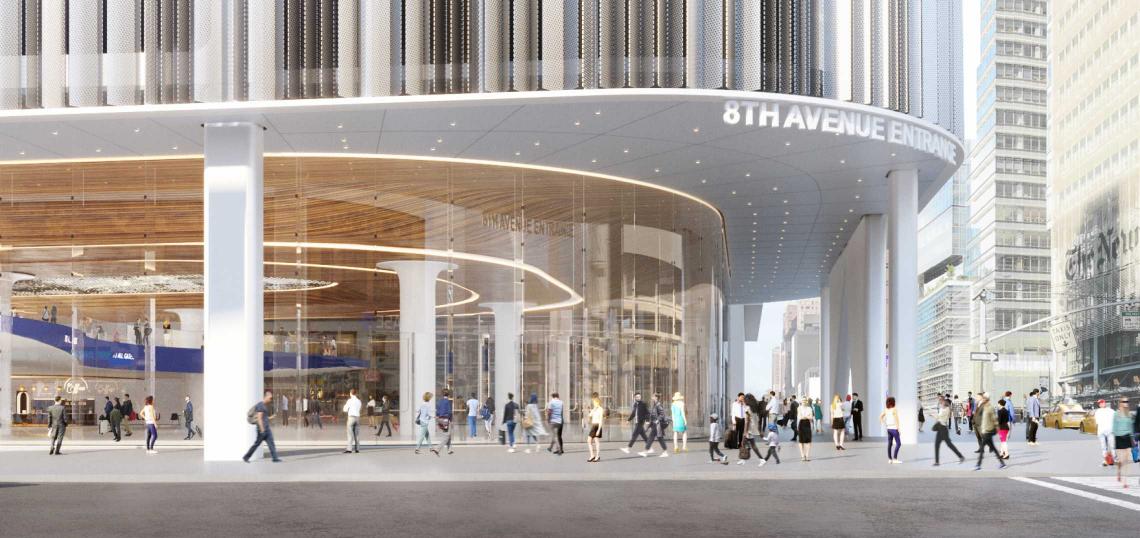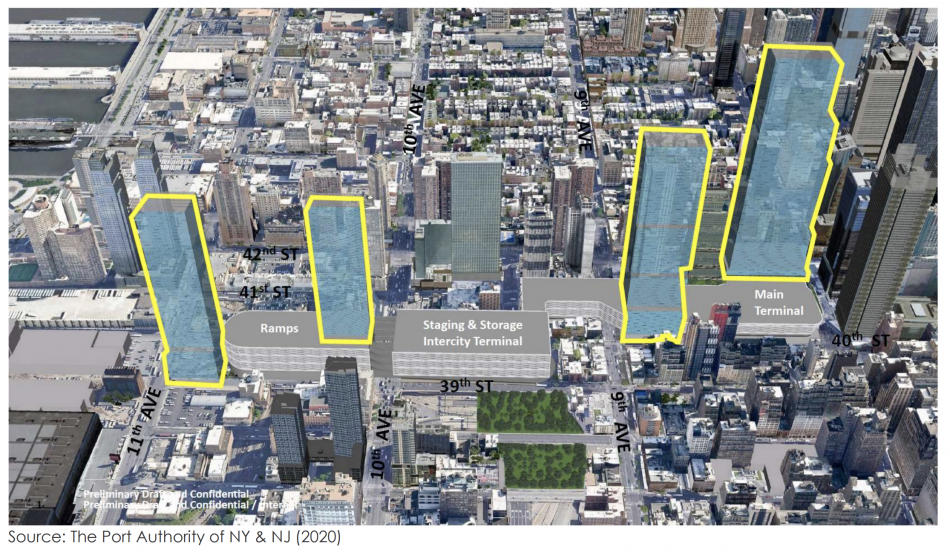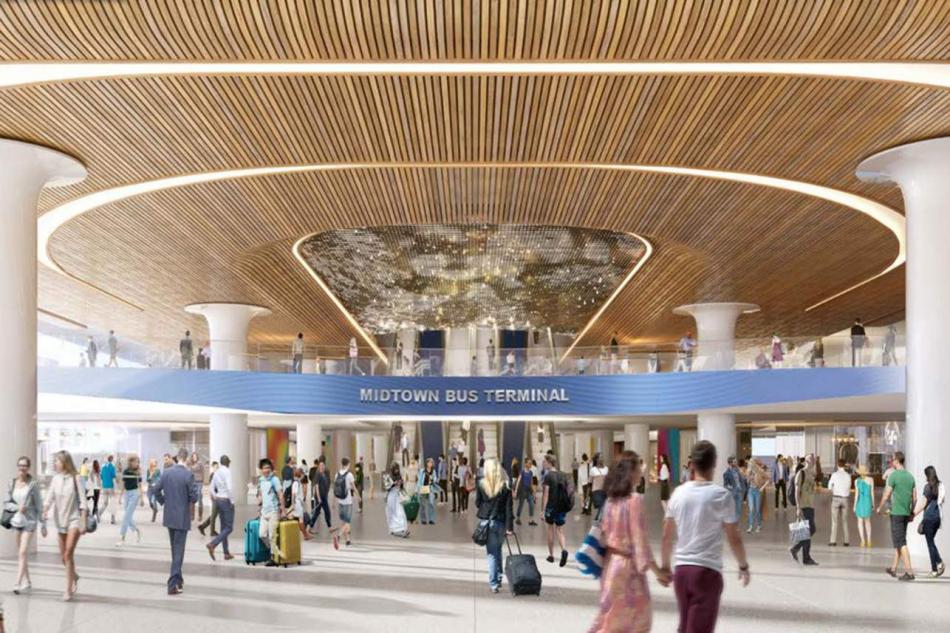Earlier this year, The Port Authority of New York and New Jersey (PANYNJ) announced plans to raze and replace one of New York City's most loathed transit facilities with a state-of-the-art bus terminal.
Now, just over four months later, the PANYNJ is making good on its promise, sharing today that it is moving forward with the launch of the federal environmental review process. Officials have also set dates for four virtual public hearings, on June 23 and 24, to allow groups and individuals to obtain more information and submit comments on the project (details on how you can participate are here: pabtreplacement.com).
The Federal Transit Administration earlier today published its Notice of Intent (NOI) to prepare an environmental impact statement (EIS) based on the Port Authority’s final scoping document. The proposal's scope of work for the new "Midtown Bus Terminal" accommodates a potential 40-percent increase in bus rider capacity and, per a PANYNJ's press release, includes:
- Replacement of the existing terminal on Eighth Avenue for commuter bus services with a state-of-the-art, best-in-class facility.
- A bus storage and staging building from Ninth to 10th avenues between 39th and 40th streets that will decrease dramatically the number of buses on congested city streets.
- The storage and staging facility also will include additional capacity to handle intercity buses that currently load and unload on city streets, reducing pedestrian and vehicular congestion and curbside traffic.
- New bus ramp infrastructure between 10th and 11th avenues enabling direct bus access to and from the Lincoln Tunnel to both the new staging and storage building and to the new terminal, which is also designed to minimize bus travel on city streets.
- A new underpass under Ninth Avenue between 40th and 41st streets linking Dyer Avenue to the lower level for buses entering the new facility.
- Approximately 3.5 additional acres of new green space in the community between Ninth and 10th avenues created by decking over sections of the Dyer Avenue entrance to the Lincoln Tunnel. Those areas will serve as temporary staging locations during early phases of construction and will be transformed for public green space when construction is complete.
The original Port Authority Bus Terminal was built in 1950 (expanded in 1981) and is the world's busiest. Pre-pandemic it served more than 250,000 passengers daily.
Although the new Midtown Bus Terminal will be built entirely on existing Port Authority property and use no private land, the estimated $10-billion-plus project will be in part funded through the sale of development rights for up to four new high-rises on surrounding parcels (one on 8th Avenue between 41st Street and 42nd Street; one on 9th Avenue between 40th Street and 41st Street; one on 11th Avenue between 39th Street and 40th Street; and one on 10th Avenue between 39th Street and 40th Street). Additional funding will come from city PILOTs, Federal Transit Administration programs and payments, and the agency’s 2017-2026 Capital Plan, which has already earmarked $3 billion for the project.
Officials share that a construction timeline will be developed with input from the construction industry and the local community, but will likely be outlined in phases. Previously, PANYNJ executive director Rick Cotton said the agency had set a "10-year time frame" for completing the new terminal.
“The Port Authority’s proposal for a new Midtown Bus Terminal will not only ease commutes for workers throughout our region, it will be a vital component in the redevelopment of the nation’s busiest transit district in Midtown West, joining a new Moynihan Train Hall and an expanded and reimagined Penn Station,” said Gov. Andrew Cuomo. “Transforming what is considered one of New York’s most glaring eyesores and turning it into a world-class facility we can all be proud of is a project that is decades overdue and will create opportunity well into the future.”
“The new Midtown Bus Terminal is a creative, audacious and forward-thinking reimagining of the bus commuting experience through the lens of modern new standards of public transit and customer experience,” said PANYNJ Chairman Kevin O’Toole. “We look forward to moving ahead with this critical project and hearing from the community and the commuting public.”
- Midtown (Urbanize NYC)








